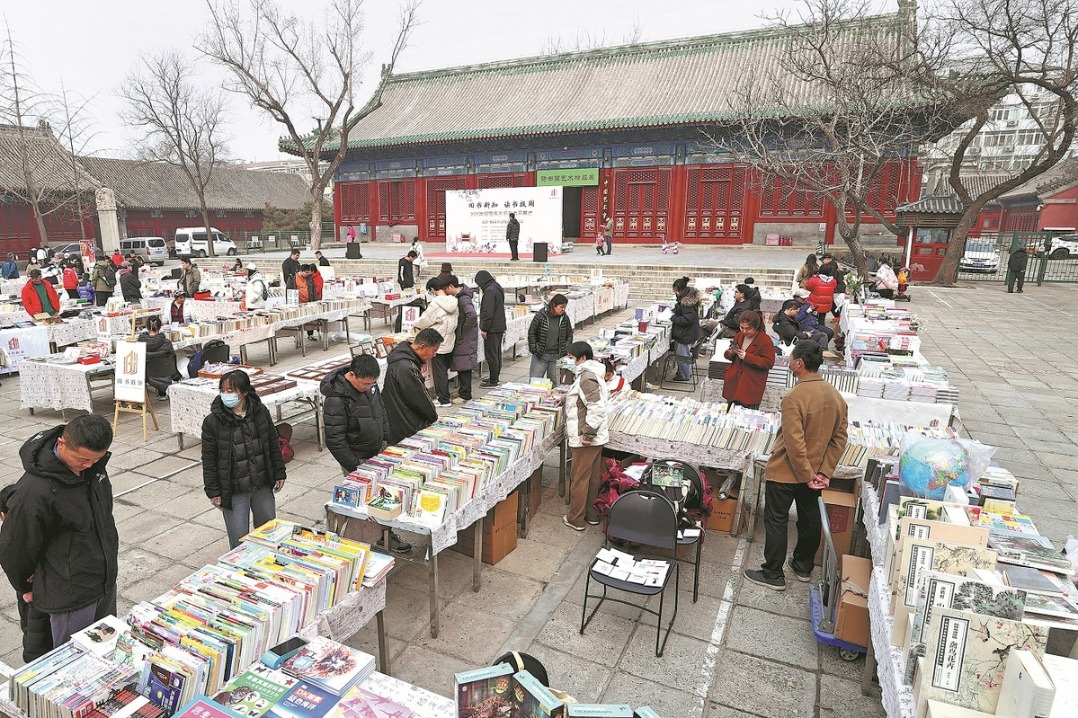Chinese team creates ultrathin metal films for next-generation electronics

Chinese scientists have recently achieved a breakthrough in the fabrication of single-atom-layer metal materials boasting a thickness of merely one-millionth of that of a standard A4 paper, setting a new record in creating stable two-dimensional non-layered forms of metals that are as thin as their atomic bonds allow.
The pathbreaking research conducted by the Chinese Academy of Sciences' Institute of Physics was published in the scientific journal Nature on Thursday.
Zhang Guangyu, corresponding author of the study, said the research pushes the thickness of 2D metal materials to the angstrom scale, where 1 angstrom equals 0.1 nanometer, unlocking new possibilities for next-generation electronics, quantum computing and high-efficiency catalysis.
"Such 2D materials are special substances with only one or a few atomic layers. Their electrons are confined to move within a 2D plane, granting them extraordinary conductivity, transparency and mechanical strength due to the quantum confinement effect," Zhang said.
Since the discovery of graphene in 2004, scientists have identified hundreds of 2D materials. These "miraculously thin films in the material world" are widely used in flexible screens, ultrafast transistors and quantum devices.
However, all existing 2D materials are derived from layered crystals, "like easily separable layers of a cake", while 97.5 percent of materials, including non-layered metals, resemble "compressed biscuits" due to their tightly bonded three-dimensional atomic structures, Zhang said, adding that peeling a single atomic layer was considered nearly impossible.
Last year, a team of global scientists created a single-atom-thick gold sheet, which they dubbed "goldene" to match with graphene, a material made of a single layer of carbon atoms. But making other 2D metals was impossible until Chinese scientists made it possible.
The researchers at CAS' Institute of Physics developed an innovative Van der Waals squeezing technique. To squeeze metals such as bismuth and tin, they used "atomically flat" molybdenum disulfide as an anvil.
"The metallic films produced by this method measure 6.3 to 9.2 angstrom in thickness — almost like flattening a three-meter metal cube into a single layer that could cover the entire city of Beijing," Zhang said.
The 2D metal samples, protected by encapsulation layers, remain stable in air for over a year, according to the researchers.
Du Luojun, co-corresponding author of the study, said that when metals are compressed to atomic thickness, the motion of electrons shifts from 3D to 2D. "It's like turning an ocean into a film of water, in which exotic quantum fluctuations inevitably emerge," he said.
Such extreme-condition metal films will serve as new platforms for studying quantum Hall effects, topological phase transitions and other frontier topics, the researchers said.
The combination of atomic-scale thickness and high conductivity in these 2D metal materials enables applications such as transparent flexible electrodes for thinner, more durable foldable mobile phone screens.
In catalysis, they could enhance chemical reaction efficiency dozens of times. Devices made from these atomically thin metals may shrink chip volumes by a thousandfold, while reducing power consumption to 1 percent of current levels.
"If 3D metals shaped the material foundation of human civilization, 2D metals may define the next technological era," Zhang said.
These materials could lead to revolutionary applications such as room-temperature superconducting devices, ultrasensitive biochips and subnanometer memory.
The CAS team is now developing 2D metal alloy fabrication techniques to supply critical materials for strategic fields such as 6G communications and quantum computing.
Reviewers at Nature said the study "opens an important research field on isolated 2D metals" and "represents a major advance in the study of 2D materials".
yandongjie@chinadaily.com.cn
- Minister calls for ensuring SCO's role as anchor of stability
- China's tightened drug control measures bring major results
- Beijing's old book market revived by new wave of collectors
- Five-year plans chart steady progress
- Ten photos from across China: June 20 - 26
- Shenzhou XX crew complete second spacewalk outside Tiangong station




































